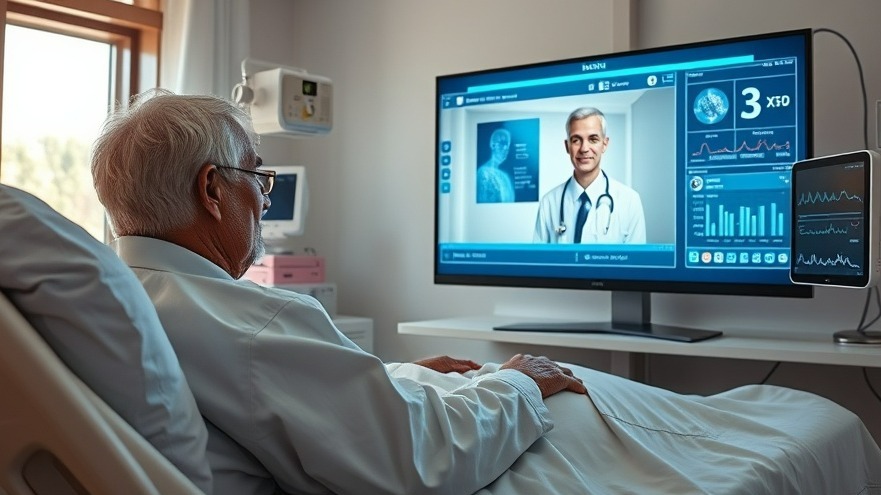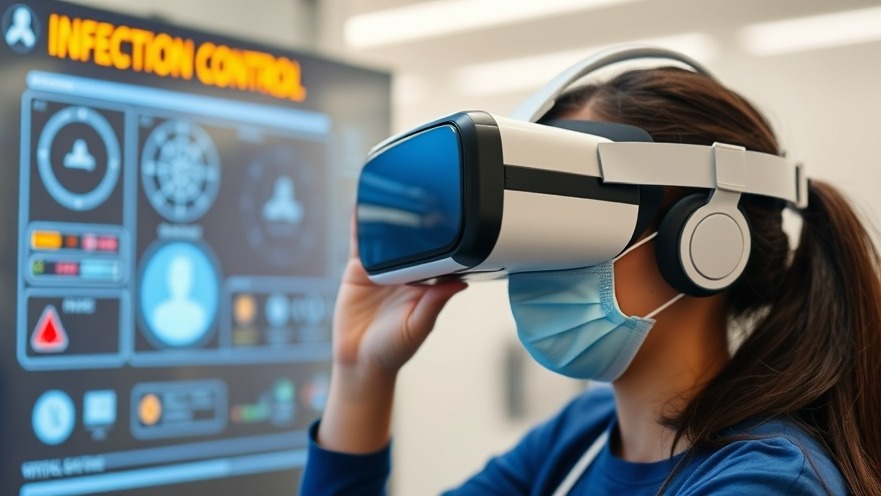
Understanding the Digital Divide in Healthcare
Healthcare is at a pivotal moment in its digital transformation journey. A recent report from SOTI reveals alarming trends in AI adoption juxtaposed with the persistence of outdated systems and security threats. The survey, which examined responses from 1,750 IT decision-makers worldwide, shows that while some U.S. healthcare organizations are embracing innovative technologies, many remain hindered by legacy systems that compromise their operations and security.
The Rise of AI in Patient Care
AI technology’s impact in healthcare has rapidly expanded, now encompassing functions that directly enhance patient care. With 55% of organizations currently employing AI for personalized treatment plans, the U.S. ranks second globally in this regard. This substantial leap reflects a growing recognition of AI's potential to improve decision-making processes, ultimately benefiting patient outcomes swiftly.
Furthermore, administrative applications of AI have more than doubled in one year, progressing from 25% in 2024 to 55% in 2025. This increase illustrates how AI is starting to bridge the gap between patient needs and operational efficiency. However, the transition won’t be without its challenges.
Legacy Systems: A Stumbling Block
Notably, over half (53%) of U.S. healthcare IT leaders still rely on outdated technology, presenting a significant roadblock to digital advancements. A staggering 93% acknowledge that legacy systems are causing complications, significantly affecting their ability to implement IoT and telehealth advancements. The consequences of these outdated systems are dire:
44% of IT professionals report that their networks are susceptible to security attacks.
41% struggle with integrating Electronic Medical Records.
38% spend excessive time addressing preventable technical issues.
31% state that accessing patient records is often inefficient and delayed.
The Growing Threat of Cybersecurity
One of the stark revelations from the report is the increasing anxiety surrounding data security. For one in three IT leaders, protecting sensitive information remains paramount. The risks are multifaceted:
Half of all respondents experienced a breach from an external source within the last year.
Nearly 47% faced unintentional leaking of data by staff.
80% expressed concerns regarding data protection during the disposal of mobile devices.
Enterprise Mobility Management: A Must-Have
As mobile technology becomes an integral part of healthcare delivery—facilitating everything from patient enrollments to active monitoring—the necessity of robust Enterprise Mobility Management (EMM) solutions has never been clearer. Although all organizations utilize some Mobile Device Management (MDM) systems, many recognize the inadequacy of their current solutions to safeguard the increasingly complex landscape of devices. According to IT leaders, the most crucial features needed include:
69% emphasize security management.
56% prioritize cyberthreat protection.
55% need app management functionalities.
52% require compliance and policy enforcement capabilities.
49% seek options for remote troubleshooting.
Concluding Thoughts: Taking Action
For concierge health practitioners looking to enhance their practice while navigating the complexities of technology, the insights drawn from this report highlight both the opportunities and challenges presented by digital transformation in healthcare. The current landscape underscores the importance of updating legacy systems and reinforcing security measures to effectively capitalize on AI advancements.
As a healthcare professional, investing in modern technology not only streamlines operations but also improves patient care quality. The more informed you are about these emerging trends and potential risks, the better positioned you will be to ensure your practice flourishes in this digital era.
Call to Action: Embrace Change for Better Care
Now is the time for healthcare practitioners to assess their technological infrastructure critically. Are your systems equipped to handle modern challenges? By prioritizing updates to your legacy technology and implementing stronger cybersecurity measures, you can enhance both your operational efficiency and patient trust. Embrace the change and lead your practice into a secure, tech-savvy future.
 Add Row
Add Row  Add
Add 






Write A Comment